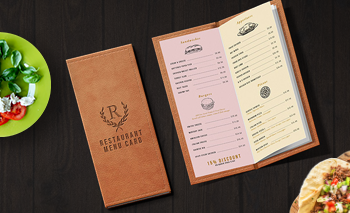How POS Systems Can Help with Menu Engineering and Optimization
How modern POS systems aid restaurants in optimizing their menus for increased profitability and customer satisfaction. Learn about the strategic use of data for menu layout, dynamic pricing, and more, enhancing operational efficiency and maximizing returns.
Share this Post to earn Money ( Upto ₹100 per 1000 Views )

In the fiercely competitive world of food service, where profit margins are often razor-thin, restaurants need every advantage they can get. One of the most powerful tools at their disposal is menu engineering—a strategic approach to crafting a menu that maximizes profitability and customer satisfaction. But how can restaurants optimize their menu effectively without drowning in data? This is where modern Point of Sale (POS) systems come into play. Far from just being glorified cash registers, today’s POS systems are robust platforms that can provide invaluable insights and tools for menu engineering and optimization.
What is Menu Engineering?

Before diving into how POS systems assist with menu optimization, it's essential to understand what menu engineering is. Menu engineering is analyzing the profitability and popularity of each item on your menu. The goal is to arrange your menu in a way that promotes high-margin items while still satisfying customer demand.
The Four Quadrants of Menu Items
In menu engineering, items are typically categorized into four quadrants:
- Stars: High profitability and high popularity. These are your best items.
- Puzzles: High profitability but low popularity. These items need a marketing push.
- Plowhorses: Low profitability but high popularity. Consider portion control or price adjustments here.
- Dogs: Low profitability and low popularity. It might be time to phase these out.
Understanding where your items fall within these categories is crucial for making informed menu design and pricing decisions. This is where the data from POS systems becomes indispensable.
How POS Systems Empower Menu Engineering
1. Data Collection and Analysis
Modern POS systems are data goldmines. Every transaction is recorded, offering detailed insights into what’s selling, what’s not, and when specific items are most popular. With the ability to track sales trends over time, POS systems allow restaurateurs to see patterns that might not be immediately obvious.
For instance, you might discover that a dish sells exceptionally well on weekends but barely moves during the week. Armed with this information, you could promote this dish more heavily during the week or create special offers that encourage customers to try it.
2. Identifying High-Margin Items
One of the most significant advantages of using a POS system is its ability to identify high-margin items—those that bring in the most profit. By analyzing cost data (which can be entered into the system) alongside sales data, a POS system can help you determine which items give you the best return on investment.
Once these items are identified, you can strategically place them on your menu to draw more attention. For example, highlighting high-margin items in a separate section of the menu or using visual cues like boxes or icons can encourage customers to order them.
3. Dynamic Pricing Adjustments
Menu pricing is an art, and even slight adjustments can have a significant impact on profitability. POS systems allow for dynamic pricing strategies where prices can be adjusted based on demand, time of day, or even inventory levels.
For example, if a particular ingredient is in short supply, you might temporarily raise the price of items that use that ingredient. Conversely, if an item is overstocked, you could lower the price or offer a discount to move it quickly. These real-time adjustments can keep your menu optimized for profit without requiring constant manual oversight.
4. Inventory Management Integration
POS systems are increasingly integrated with inventory management tools, which further aids in menu optimization. By tracking ingredient usage in real time, a POS system can alert you when certain items are running low, allowing you to adjust your menu accordingly.
For instance, if your best-selling dish suddenly has a supply chain issue, you can quickly remove it from the menu or replace it with a similar item that’s more readily available. This flexibility ensures that your menu remains profitable and operationally efficient, even in the face of unexpected challenges.
5. Customer Feedback and Loyalty Programs
Many POS systems now include features that allow customers to provide feedback directly through the payment interface. This feedback can be invaluable for menu engineering, offering insights into what customers love or dislike about specific dishes.
Additionally, POS systems often support loyalty programs, which can be used to promote high-margin or underperforming items. For example, you could offer double loyalty points on a new or puzzle item, encouraging customers to try it and helping you gather data on its reception.
6. Menu Layout and Design Insights
Some advanced POS systems provide analytics on menu layout—how customers interact with digital menus, which sections they spend the most time on, and which items they click on but don't order. This information can be crucial for designing a physical or digital menu that maximizes sales.
For instance, if you notice that customers frequently look at but rarely order from a specific section of the menu, it might be time to reconsider how those items are presented. Maybe they need more enticing descriptions, or perhaps they should be moved to a more prominent location on the menu.
Maximize your restaurant’s profitability with advanced menu engineering. Optimize your menu today using MetricsERP's powerful POS system! Get started now!
Summary
Menu engineering is not just about making your menu look pretty—it's a data-driven approach to maximizing profitability while delivering what customers want. Modern POS systems are essential tools in this process, offering detailed insights and real-time capabilities that would be impossible to achieve manually.
From tracking sales trends and identifying high-margin items to enabling dynamic pricing and integrating with inventory management, POS systems provide the necessary infrastructure to keep your menu optimized and profitable. As the restaurant industry becomes increasingly competitive, leveraging the full power of your POS system for menu engineering could be the key to staying ahead of the curve.

 westside66
westside66 















